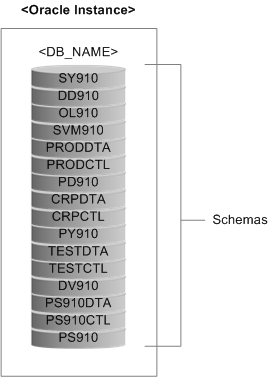Oracle
The basic architecture of an Oracle database includes many different logical and physical storage structures.
Typically, an Oracle database is divided into one or more logical storage structures. The highest-level structures are table spaces and user schema. These structures provide two categories that data may be logically grouped. Data belonging to one table space may belong to different schema, and data for one schema may belong to different table spaces.
- Table Spaces
The physical database storage units, data files, are associated with table spaces according to the logical structure of the database. For example, table spaces may be created to separate different categories of data. Table spaces are divided into smaller logical divisions called segments, which are divided further into extents and data blocks. These levels of data storage allow control over how the data files are allocated for physical storage.
- User Schema
A schema is a set of objects associated with a user. Schema objects include tables and other data structures used by the database. These objects do not directly correspond to data files stored on the server. Each object's data is stored in one or more data files within a table space. You can specify the space allocated for tables and a few other objects.
- Tables
A schema is a set of objects associated with a user. Schema objects include tables and other data structures used by the database. These objects do not directly correspond to data files stored on the server. Each object's data is stored in one or more data files within a table space. You can specify the space allocated for tables and a few other objects.
This diagram illustrates the Oracle structure with EnterpriseOne:
